Thanks all for checking in

Paul, yes, I don't know you, but I did read your Intro (I read each and every single post here on MEM). I've not been as diligent as I should be about welcoming our new members

.
Pictures may be worth a thousand words, but a couple of words can make a picture worth even more. Don't be afraid to use words - it works much like learning to use tools; the more you use them the more comfortable you get about using them. Looking forward to your posts mate

Well, my new PC is still a no-show, so I guess I've got most of the weekend for machining

First up some file-work; I just rounded over the end of the long bit by eye. It's not critical, and just for looks, so if it looks good enough it is good enough:
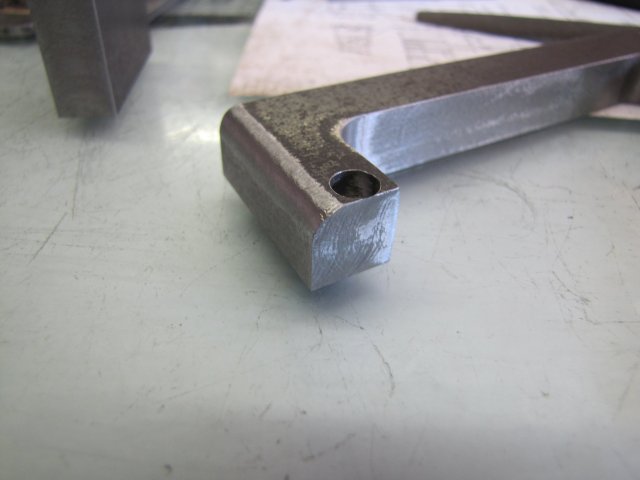
Then I started to solder the bits together. First the cross-head guide carrier to the long section - making sure that they were nice and square (no photo) then the foot at the end of the long section:
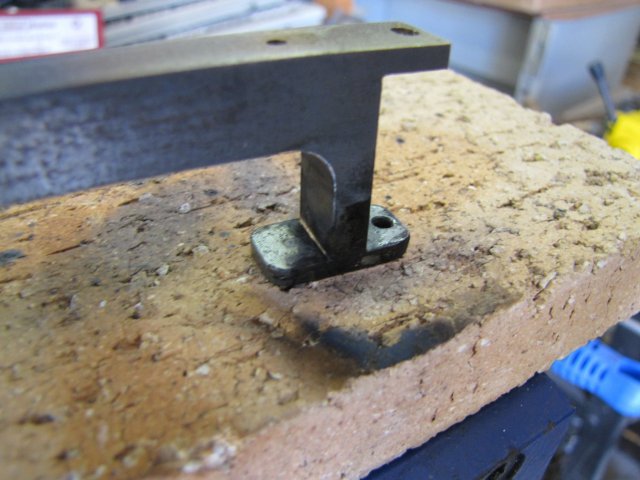
When I silver soldered the cylinder mountings, I used the Sievert propane torch, but found that even though it gave a lot of heat fairly quickly, it didn't work as nice on the steel as it does on copper and bronze. So I used the oxy-propane kit; this makes a much hotter, but smaller flame, but with the steel not conducting away localised heat as quickly as copper, it was easy to get the joint areas heated up very quickly to soldering temperature - and a dab with the solder stick on the opposite side of the joint after the flux ran and the metal on that side was dull red made the solder wick right into the joint toward the flame side. I found this much more controllable - though I still did make a bit of a mess in some spots

I nearly forgot about the valve lever mounting - fortunately I had not soldered the "larger" base plate on yet. I turned up the mounting from some steel, and drilled it to tap M3. The plans says M2.5, but I still don't have M2.5 taps, and the one set I've been able to find costs N$400 - that's a bit dear right now... M2 seems a bit light-weight for this link, and there is enough room to use M3. I didn't tap the hole yet; M3 threads are quite delicate, and between oxidisation from the heat while silver soldering and pickling afterward, they might just be eaten away:
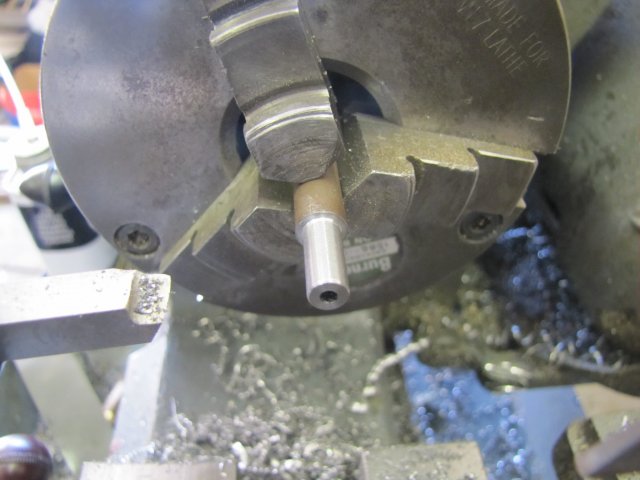
The pivot pin installed in the workpiece - I removed the oxides from the previous silver soldering session in the hole by first twirling a 6mm drill bit in the hole, and then rubbing off the rest with a bit of rolled-up scotch-brite:
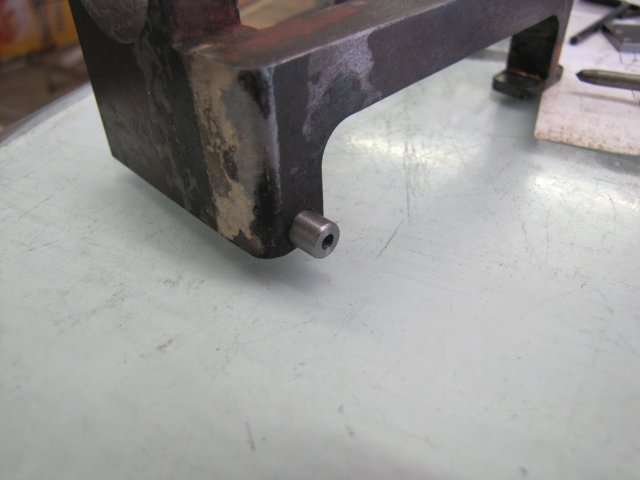
Next I cleaned up the bottom of the workpiece with scotch-brite as well to get rid of the crud there, dropped some flux and a 1mm long bit of snipped-off silver solder in the pivot mounting hole before inserting the pivot mounting, and lastly added some flux between the upper bit and the mounting plate. I set the lot up on the flattest bit of fire-brick I have, and gave it the welly with the torch, once again heating from one side and feeding the stick from the other side once the flux flowed and the bits of metal around the joint was dull-red. After cooling a bit, it looked like this:
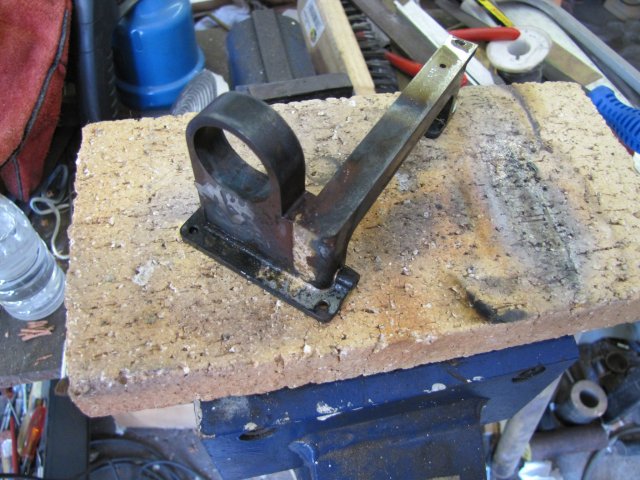
I'm slowly growing more confident with silver soldering - things still are not as nice-looking as other members show, but each time I learn something new. How to maneuver the torch. Where to apply the heat. When to start applying solder. How much flux to use. How much solder to use. I'm still getting a lot of that wrong, but it is improving. I still tend to apply too much flux and solder - though I think for today's session, I got the flux proportions better. Still too much solder though. And to put that in perspective, I used only about 10mm of 1.6mm solder rod in total today... More practice needed

. Another scary bit about silver soldering is the way the workpiece looks once done. It's always that "Darn - how will that lot EVER clean up" feeling. I still get that feeling, and the photo above shows why...
Off to the kitchen, and I purloined a suitable plastic container from the kitchen cupboards. While I was there, I filled the kettle and put it on to boil. The kettle takes about 1.75l of water, but I stole enough to make a cup of coffee before pouring the rest in the plastic container and adding about a table-spoon full of citric acid to that. Taking the coffee and the acid tub to the shop, I plonked the workpiece in the hot citric acid (outside on the shop step) , and it immediately started to fizz up in there:
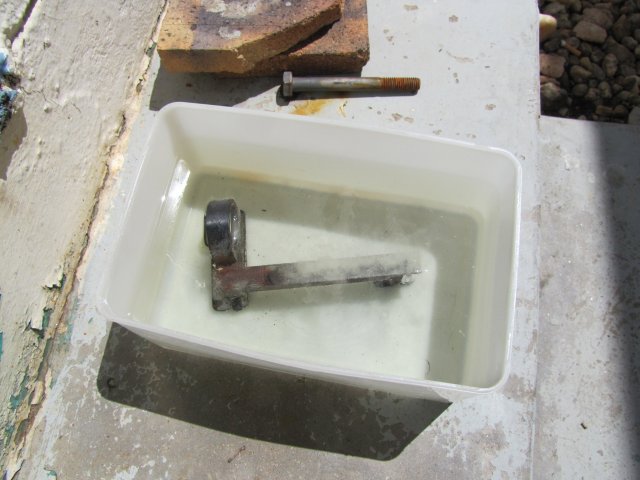
Once the coffee was finished, I took the workpiece out, gave all the still-black bits a scrub with a small stainless-steel wire brush, and plonked it back in the pickle. That was right about lunch-time, and as I was feeling a bit peckish, I went indoors and had a nice ham and cheese sandwich in front of the telly with the AC on to cool down. Happened to watch a guy called "Guy" eating grits and sausage sauce on the Food channel


Back to the shop, and I rinsed the workpiece very thoroughly with clean water. A good scrub-down with more scotch-brite, and it looks OK - except for where I applied too much solder:
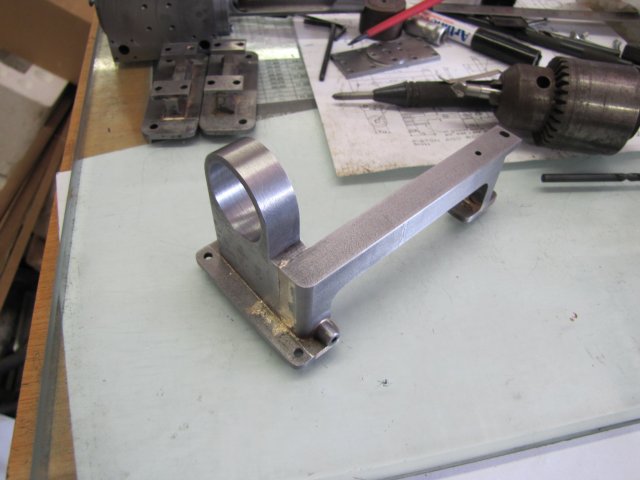
On to some work on the base. When I planed down the sides of the planks that I glued together for the base, I didn't get them entirely square, so the glued base ended up with a slight rise in the middle. The last time I tried to plane a flat sheet of wood down was back in my junior high school days - about 1996... And that was in a well-fitted woodworking shop... Well, I have what I have, so I soldiered on - clamping the plank in different orientations and just manually planing it down:
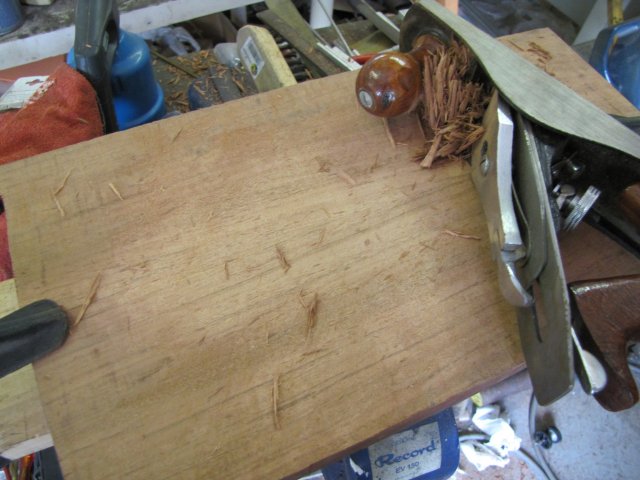
Once it looked about flat enough, I took the orbital sander to it - outside again. Things turned out surprisingly well

:
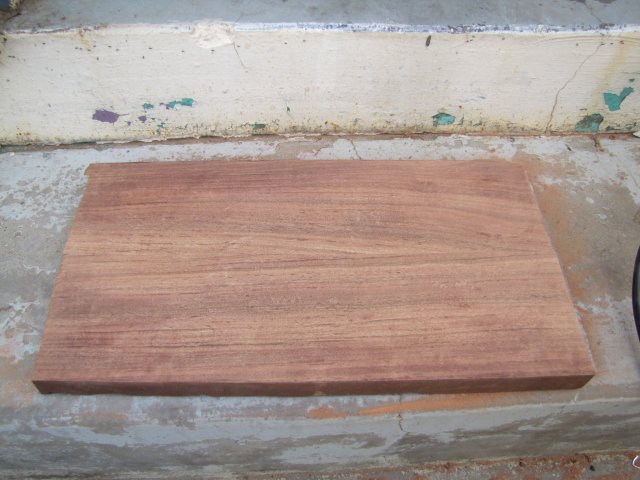

There's quite a large difference in the wood colour between inside the shop under fluorescent lighting and outside in natural light when photographed!
All the sides were still pretty rough, and there was no convenient or safe way to run those past the circular saw in it's stand, so I took it out of the stand, set up some trestles outside (under the car-port - so nice and shaded) and started trimming away:
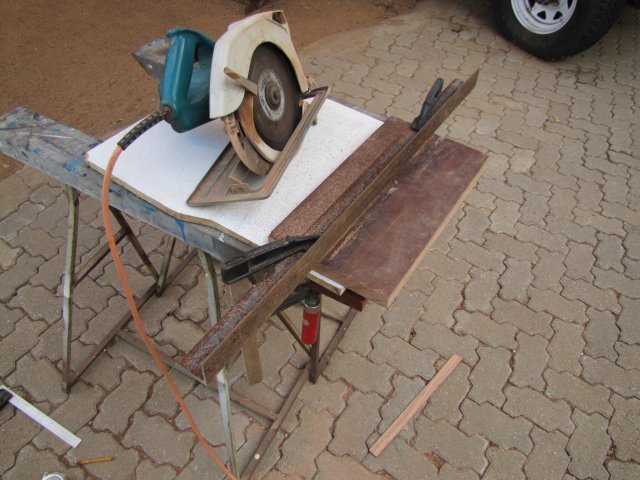
The underside of the plank is still very rough, and I'll need to make a plan with that. The circular saw blade is no longer in prime condition, and I have no way to sharpen it yet, so it hacked some corners off the wood, but that I'll fix with a router and an edge-shaping bit later on.
A family shot with all the bits in their approximate locations:
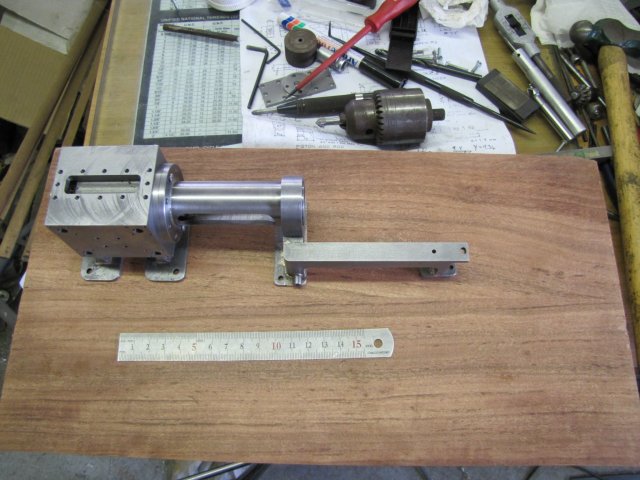

And Yes! - they all sit flat and fit together

- even on the wood!
There's lots of flaws for everyone to see in the overall picture, but somehow I don't mind that. This project has been a lot of hard work so far, and for the most part have taxed my own machining abilities to the limit with working in steel rather than non-ferrous metals, making built-up assemblies and even the wood-working. I'mHavingAHellOfALotOfFun

Kind regards, Arnold